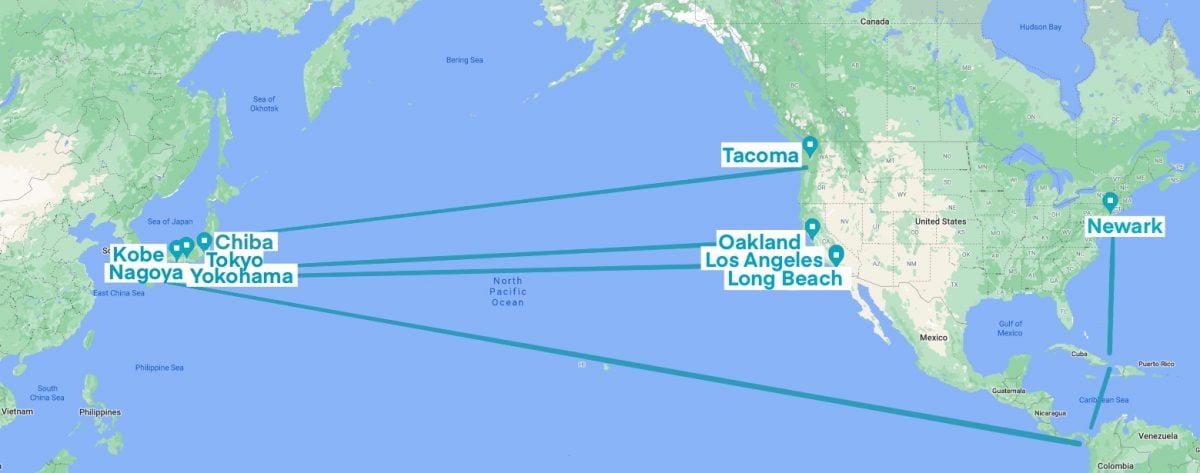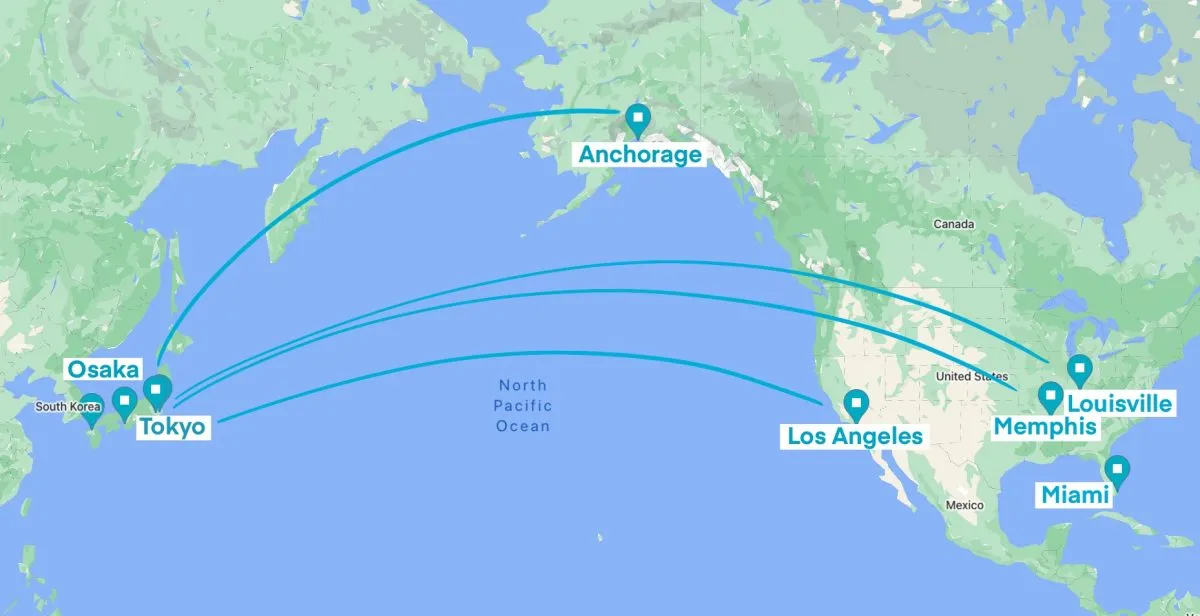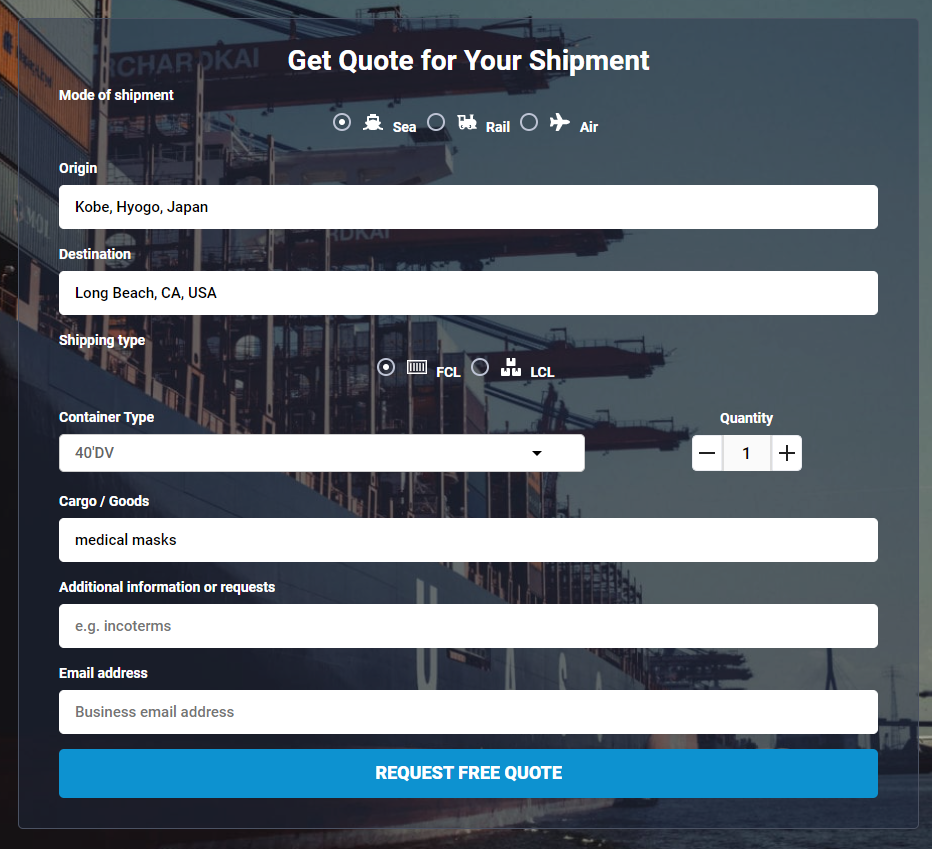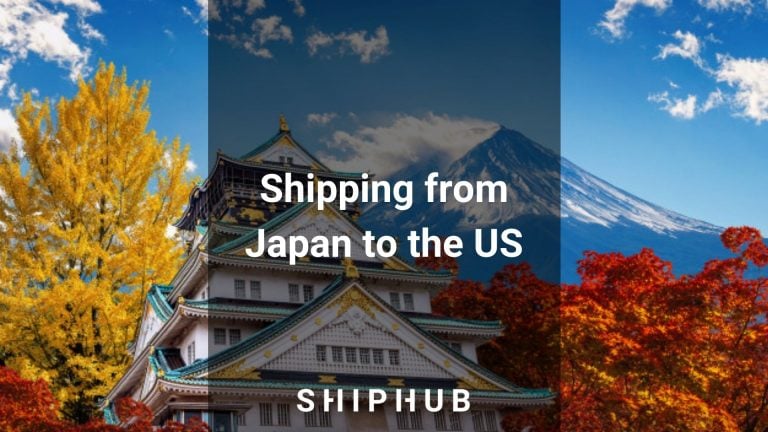Japan is the fourth-largest importer of goods in the world. Ever since the 20th century, Japan and the US have maintained a close partnership, especially in terms of trade. As a result, the US is Japan’s largest export market. Japan is famous worldwide for its top-quality vehicles, electronics, and machinery, which are the top three most imported products from Japan to the US. Find all the essential information on shipping from Japan to the US.
Shipping from Japan to the US
With the implementation of the US-Japan Trade Agreement (USJTA) in 2020, which has eliminated or reduced tariffs on various goods, importing products from Japan to the US improved. Due to the considerable distance between the two countries, goods from Japan are shipped to the US by using either airfreight or ocean freight.
Ocean freight from Japan to the US
The most popular shipping option chosen by US importers is ocean freight. It allows the transport of small and large shipments for a lower price compared to airfreight. Shipping costs can even be optimized by choosing an adequate type of container. Full Container Load (FCL) is used when shipping larger and heavier shipments that can fill up a 20’DV or 40’DV container, while Less Than Container Load (LCL) is used for smaller shipments that would not fill up a whole container.
How long does shipping from Japan to the US by sea take?
Ocean freight is also the slowest shipping option available when shipping from Japan to the US. On average, Japanese shipments arrive at the West Coast in 15-20 days, and ships arrive at ports located on the East Coast in 25-30 days.

Main cargo ports in Japan and the US
There are over a thousand ports located in Japan. We present some of Japan’s most important seaports below.
- Port of Nagoya Aichi is Japan’s busiest port in terms of cargo tonnage; it handles around 10% of Japan’s total trade value. It is also the largest exporter of vehicles in Japan, and it has connections to 160 countries.
- The Port of Chiba is Japan’s second-busiest seaport for cargo traffic. It opens onto Tokyo Bay and offers easy access to Japan’s capital city. Located in the Chiba prefecture, it handles around 160 million tons of cargo annually.
- Port of Tokyo is one of the largest seaports in Japan and the Pacific Ocean. It is a deep-sea port, handling annually around 100 million tons of cargo.
- Port of Yokohama began operations in 1859; it is one of the most important seaports in Japan. Like the port of Chiba, it is in proximity to Tokyo Bay. It handles around 30% of ocean freight in Japan.
- Port of Kobe is Japan’s fourth-busiest port, but it was the most important seaport in Japan until the Great Hanshin earthquake struck in 1995. It is located in the Hyogo Prefecture and currently connects over 500 ports worldwide.
The main cargo ports in the US are:
- Los Angeles has been the busiest container port in the United States for the past two decades. It handles 10 million container units annually, and Japan is one of the Port of Los Angeles’s top partners.
- Long Beach is located close to the city of Los Angeles. It is the second-busiest container seaport in the United States and a gateway for trans-Pacific trade. It handles around 7 million container units annually.
- Newark is the largest seaport on the East Coast and the third-busiest seaport in the country. It is the main entry point into the New York Metropolitan Area.
- Tacoma is in the state of Washington and is the third-largest seaport on the West Coast. Along with the Port of Seattle, it is part of the Northwest Seaport Alliance. Japan is Tacoma’s top trading partner by exported volume.
- Oakland is in the San Francisco Bay Area; it is the fifth-busiest container port in the US and fourth-largest on the West Coast. In 2020, it handled more than 75% of Oakland’s goods coming from Asia.
Airfreight from Japan to the US
Airfreight is a less popular option than ocean freight when it comes to shipping from Japan to the US due to the much higher shipping costs. Moreover, it is not possible to ship oversized shipments by air freight. In addition, airports offer extra security, so shipping smaller shipments of valuable goods using air freight is recommended.
Another advantage of air freight is the transit times it offers. Shipping via cargo airlines is much quicker than ocean freight, as it can take as little as 2 to 4 business days for your order to arrive in the US. Similarly, express shipping shortens transit time, as there is no need to go through the complex procedures as in regular air freight.

Main cargo airports in Japan and the US
The main cargo airports in Japan with direct cargo airlines to the US are:
- Tokyo (Haneda & Narita International Airport): these two airports in the Greater Tokyo Area are the busiest airports in Japan in terms of cargo traffic, with Narita being the 10th busiest cargo in the world. It is also the hub for Nippon Cargo Airlines.
- Osaka (Kansai International Airport) is the third-largest airport in Japan by total cargo throughput. It is located on an artificial island in Osaka Bay, close to the city of Osaka. It is the main FedEx Express hub in Japan.
The main cargo airports in the US are:
- Memphis (Memphis International Airport) is the busiest cargo airport in the world in terms of cargo traffic. It surpassed Hong Kong International Airport in 2020, with a total cargo throughput of 4.61 million tons. In addition, it is home to the main international hub for FedEx Express called the ‘Superhub.’
- Anchorage (Ted Stevens Anchorage International Airport) is the second-largest cargo airport in the United States and the fifth-largest in the world. Since it is located in Alaska, it is often used as a transport hub between the US and Asia.
- Louisville (Louisville International Airport) is the third busiest airport in the US regarding total cargo throughput. It is the main hub for UPS, often called the ‘USP Worldport.’
- Miami (Miami International Airport) is one of the largest airline hubs in the United States. It handles over 30 cargo airlines, and it is a hub for FedEx Express, UPS, and Sky Lease Cargo.
- Los Angeles (Los Angeles International Airport) is the fifth-busiest cargo airport in the US in terms of cargo traffic. It is very well connected to other cities in California, and it offers many cargo airlines to Asian countries.
Shipping from Japan to the US – tariffs and customs duty
When the US-Japan Trade Agreement entered into force in January 2020, many reductions to tariffs were enacted, meaning that various goods could be imported at lower duties. Nonetheless, importers will be expected to pay customs duty on any orders exceeding the US Duty-Free threshold, in addition to the state’s sales tax.
Additionally, an import declaration form will need to be submitted when importing goods from Japan, with the following documents attached:
- an invoice
- a bill of lading
- a certificate of origin
- all licenses and certificates required by the US law
- customs duty payment slips.
How much does shipping from Japan cost?
When planning to import goods from Japan to the US, it is best to compare freight rates first. The easiest way to do this is by filling out a short form on ShipHub. After sending the request, you will receive offers from various verified freight forwarders, from which you can select the one that is most suited to your requirements.

Check how to ship goods from the US to Japan.
Read our other guides on shipping to the US:

